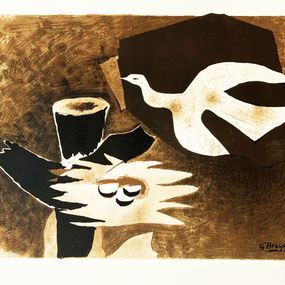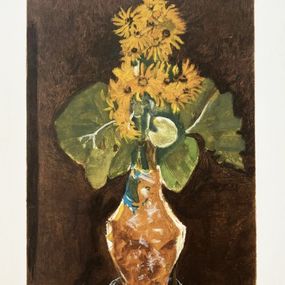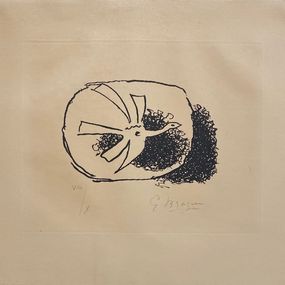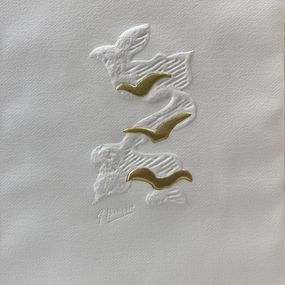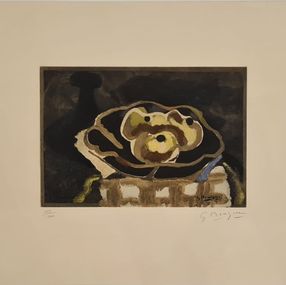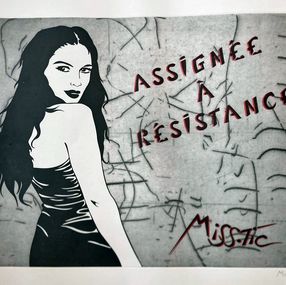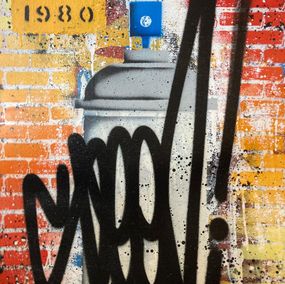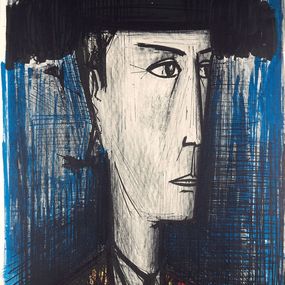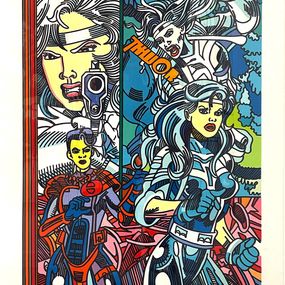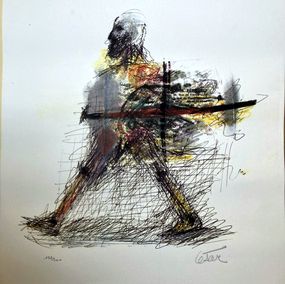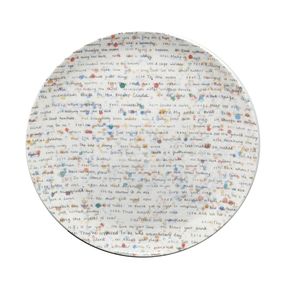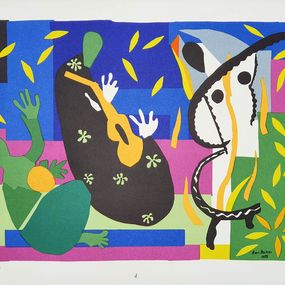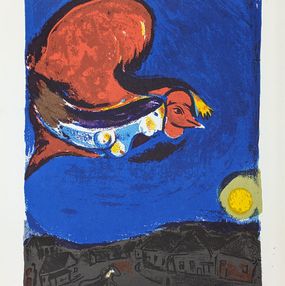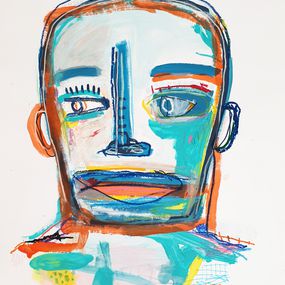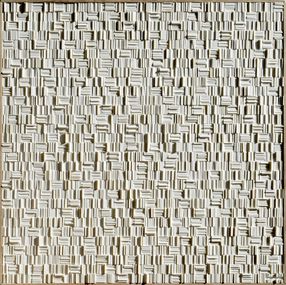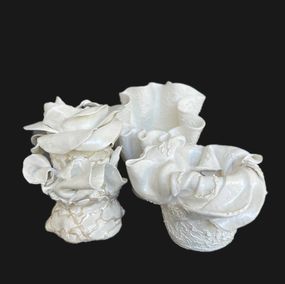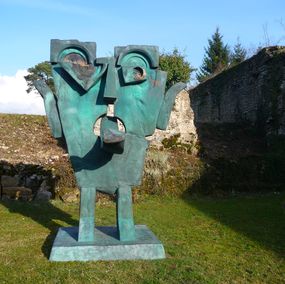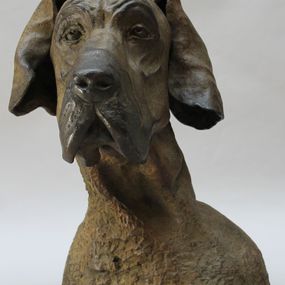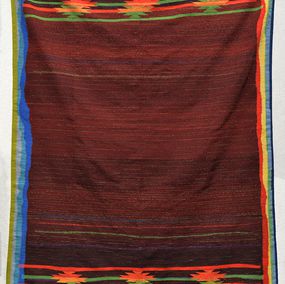
by Georges Braque
Print : aquatint
33 x 47 x 1 cm 13 x 18.5 x 0.4 inch
Second NOT DISPLAYED BLUR TEXT
Free returns within 14 days
Authenticity guaranteed
Learn moreSecure payment
About the artwork
Type
Numbered and limited to 50 copies
1 copy available
Signature
Hand-signed by artist
Authenticity
Sold with certificate of Authenticity from the gallery
Invoice from the gallery
Dimensions cm • inch
33 x 47 x 1 cm 13 x 18.5 x 0.4 inch Height x Width x Depth
Framing
Not framed
Artwork sold in perfect condition
Artwork location: France
Aquatint in black, Crommelynck and Dutrou print, Paris
Tests on BFK de Rives
Print justified bottom left out of 50 copies and signed bottom right
Edition Maeght, Paris
Valley No. 117
Imagine it at home

Discover more by the artist
Works in prints from Georges Braque
Presentation
If there is a painter who best represents the “honor of France," as Malraux said, it must be Georges Braque. A friend and colleague to Picasso, Derain, Apollinaire, Gris, Laurens, Léger, Satie, Reverdy, de Staël and other well-known artists of that era, he remained close to the many cultural revolutions that shook the century. Born to a family of decorative painters, Georges Braque's destiny was to follow in their footsteps as an artisan. However, in 1905, he suddenly gave up his studies and took up a new path.
Braque discovered fauvism in 1905 with the works of Matisse and Derain. Though the fauvist period only lasted a year and half, Braque would find in this movement a way of escaping academic ideas and exploring new possibilities with color. At the 1907 Salon des Indépendants in the South, Braque presented six fauvist paintings. It was at this exhibition that Braque would meet Daniel Henry Kahnweiler and Wilhelm Uhde, both of whom combined to purchase all the painting Braque had on show. The first would become his first dealer, acquiring six paintings, while the second would become his first collector, purchasing five paintings.
The following year, at the Salon d'Automne, only one of his seven paintings was accepted. That same 1907 exhibition featured a retrospective on Cézanne. Deeply inspired by the late works of the Master of D'Aix, Braque made another pilgrimage to l'Estaque in order to better study his theories and ideas. Before this trip, Braque was working as a fauvist. After it, he moved on to what would become his great work of cubism.
The origins of Cubism, a movement that would revolutionize the visual rhythm of painting and take it on an unexpected trajectory, remain unclear. It is not easy to define the paternity and the inspiration for the first cubist works, but history remembers it as a combination of efforts from these two diametric opposites, two artistic geniuses. On one side was Pablo Picasso: an artist gifted with extraordinary virtuosity, a visionary whose life was eventful and whose personality was lively and exuberant. On the other hand was Georges Braque: an artist whose brilliance was in innovation and ideas. He was an intellectual, a modest man, and someone who preferred to live quietly rather than seek celebrity.
Braque referred to their working relationship, at this time, as akin to climbing partners. It would go on to define a period in art history that was only to end in 1914 when Braque was called up to fight in the First World War. He returned in 1915, with a severe head injury, and was convalescent till 1917. From that point onwards, even if he continued to work on Cubism till 1922, Georges Braque was similarly developing a new approach to painting, one which would function thematically.
The thematic period became the third period in his work. Georges Braque devoted himself to the analysis of different subjects, working to explore all possibilities in their composition in order to finally lay bare the object. With these recurrent themes, Braque was looking to perfect his pictorial ideas and explore the extreme limit of an object's depiction. Some of the great works of his career emerged during this period: billiards, for which he would be awarded a prize at the Venice Biennale; the birds; and the Norman fishing boats, a landscape he knew intimately after establishing a studio at Varengeville-sur-Mer.
At the twilight of his life, Georges Braque set to work on his series Metamorphoses. He first made gouache sketches of roughly a hundred of his major works. Then, taking these two-dimensional works, he transformed them three-dimensionally, not virtually as he had done with analytic cubism, but directly and physically into sculpture. All of the works have names derived from Greek mythology, which Georges Braque dearly loved. His golden sculptures do seem like they have been made in an ancient goldsmith's workshop. He had already devoted a series of works to Hesiod's Theogony and now he chose the name Metamorphoses in direct reference to Ovid's work.
Braque collaborated with a sculptor who worked mainly with precious stones, Heger de Loewenfeld. Together, at the request of André Malraux, they presented this new work at the Palais du Louvre. Braque had already been the first living painter to show work at the Louvre; he painted the ceiling of the Salle Henri II in 1953. The exhibition took place from March to May 1963. Three months later, Georges Braque died. Malraux led a national mourning and himself delivered the eulogy standing before the Louvre in front of the Saint-Germain-l'Auxerrois church.
Find this artist and many more in our collection of works from the cubist movement.
More works from Galerie ABCD
At Artsper, our mission is to allow you to collect works of art with complete peace of mind. Discover the protections we offer at every stage of your shopping experience.
Buy works from the best galleries
We work in close collaboration with carefully selected art galleries. Each seller on Artsper is carefully examined and approved by our team, thus ensuring compliance with our code of ethics. You therefore have the assurance of purchasing authentic, high-quality works.
Total transparency: you know what you are buying
Before being posted online, all artworks on Artsper are reviewed and validated by our moderation team. You can browse with complete peace of mind, knowing that each piece meets our criteria of excellence.
Personalized support: our experts at your service
Our team of contemporary art experts is available by phone or email to answer all your questions. Whether you want advice on a work or a tailor-made selection to enrich your collection, we are here to support you.
Resell your works with ease
If you have purchased a work on Artsper and wish to resell it, we offer you a dedicated platform to relist it. To find out more, click here.
Make offers with Artsper: negotiate like in a gallery
You have the possibility to propose a price for certain works, just like in a gallery. This feature allows you to initiate discussions and potentially acquire your coins at advantageous prices.
Get help with your negotiations
Our team will negotiate for you and inform you as soon as the best offer is obtained. Do not hesitate to call on our expertise to ensure a transaction at the best price.
Order securely
Artsper satisfaction assurance
We want you to be completely satisfied with your purchase. If the work you receive is not to your liking, you have 14 days to return it free of charge, and you will be refunded in full, whatever the reason.
Secure payment with Artsper partners
All credit card payments are processed by Paybox, the world leader in payment solutions. Thanks to their strict security standards, you can transact with confidence.
Problem Support
In the rare event that an artwork arrives damaged or not as described, we are here to help. Whether for a return, refund, restoration or exchange, our team will support you throughout the process and will ensure that we find the solution best suited to your situation.
Conditions to benefit from Artsper protections:
- Use one of the payment methods available on Artsper for your order.
- Report any problems within one week of receiving the work.
- Provide the required photographic evidence (including the original artwork and packaging).
Artsper guarantees cover the following cases:
- The received work lacks a described characteristic (for example, a signature or frame).
- The artwork has significant differences from its description (e.g. color variation).
- The work is damaged upon receipt.
- The work is lost or damaged by the carrier.
- Delivery is significantly delayed.
With Artsper, you collect with complete peace of mind.
Artsper offers you access to more than 200,000 works of contemporary art from 2,000 partner galleries. Our team of experts carefully selects galleries to guarantee the quality and originality of the works.
You benefit from:
- Works at gallery price
- Return within 14 days, regardless of your location
- Easy resale of the work purchased on Artsper
- Personalized research tools (tailor-made selection and universe)
Our customer service is available for any assistance.
Negotiate the price of a work on Artsper
For certain works, you can use the "offer a price" option under the "acquire this work" button. After submitting your offer and making payment, the gallery can accept or decline the proposal. If you refuse, you will be refunded immediately.
For more information, contact us at [email protected].
Artsper delivers worldwide.
Artsper delivers internationally. Customs fees may apply for works shipped internationally, indicated in the first step of the shopping cart.
You can choose a delivery address different from the billing address. Make sure that a trusted person is present to receive the work if you cannot be there.
Right of withdrawal: return a work on Artsper
You have 14 days from receipt to return the work, without justification or penalties. The price of the work and initial shipping costs will be refunded once the gallery confirms receipt of the work.
Artsper covers the return costs, whether by refund or direct payment. The work must be returned in perfect condition, in its original packaging. To exercise your right of withdrawal, send an email to [email protected].
Have you purchased a painting, sculpture or work on paper?
Find our expert advice for the conservation and promotion of your works in the articles below:
- How do I frame my work?
- What base for my sculpture? li>
- How do I light my work?
- How do I install my work?
Go to your account, in your purchases tab, to benefit from exceptional discounts, negotiate for you with our partners, supervisors, assistants, scouts, etc.

